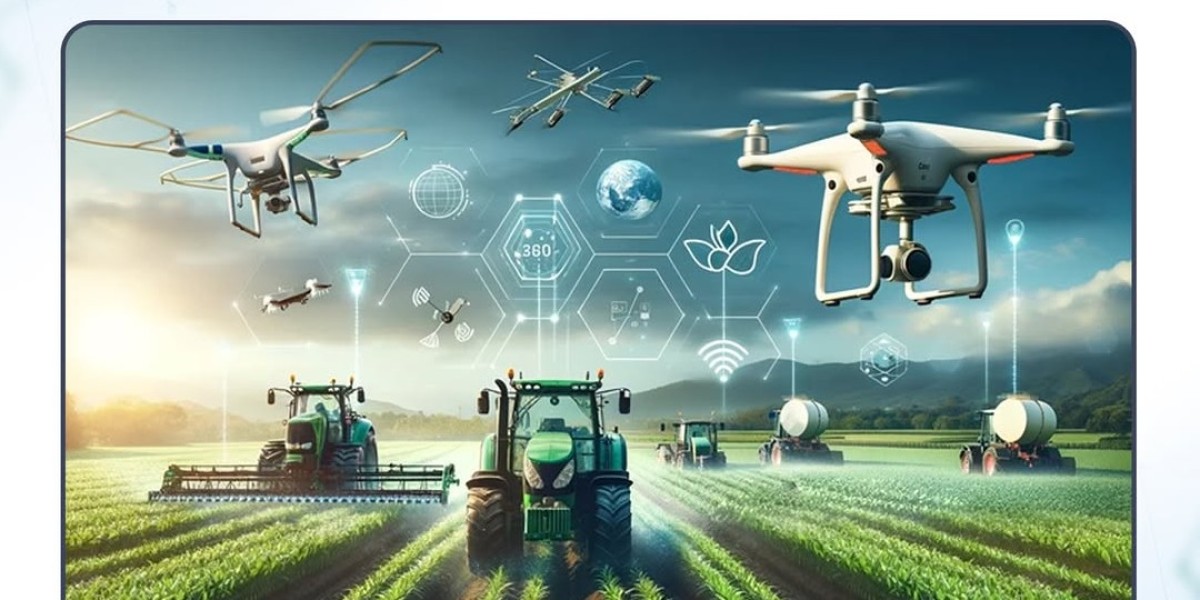Precision farming technology, also known as precision agriculture, is revolutionizing modern agriculture by leveraging advanced tools and data analytics to optimize crop production, enhance resource efficiency, and promote sustainability. By integrating sensors, automation, and data-driven decision-making, precision farming enables farmers to manage fields with unprecedented accuracy, increasing yields while minimizing environmental impact. This 800-word overview explores the components, applications, benefits, challenges, and future trends of precision farming technology, highlighting its transformative potential.
Components of Precision Farming Technology
Precision farming relies on a suite of interconnected technologies that collect, process, and apply data to agricultural operations:
Global Positioning Systems (GPS) and Geographic Information Systems (GIS): GPS provides precise location data, enabling field mapping, equipment navigation, and variable rate applications. GIS visualizes spatial data, identifying variations in soil types, moisture levels, and crop health, which guides targeted interventions.
Remote Sensing and Drones: Satellites, drones, and ground-based sensors capture detailed imagery and data on crop conditions, soil health, and environmental factors. Drones equipped with multispectral cameras detect plant stress, nutrient deficiencies, or pest activity, enabling early intervention.
Internet of Things (IoT) and Sensors: IoT devices, including soil moisture sensors, weather stations, and crop monitors, collect real-time data on environmental and plant conditions. These sensors inform irrigation, fertilization, and pest management decisions, optimizing resource use.
Variable Rate Technology (VRT): VRT enables equipment like sprayers and seeders to apply inputs at variable rates across a field based on data-driven prescriptions. This reduces waste and ensures inputs are applied only where needed.
Autonomous Machinery and Robotics: Self-driving tractors, planters, and robotic weeders use AI and GPS to perform tasks with precision. These machines reduce labor demands and enhance efficiency in planting, harvesting, and weed control.
Farm Management Software: Platforms like John Deere’s Operations Center, Trimble Ag Software, and Climate FieldView integrate data from sensors, drones, and equipment. They provide actionable insights, track performance, and streamline farm operations through user-friendly interfaces.
Applications of Precision Farming
Precision farming technology is applied across various agricultural processes to enhance productivity and sustainability:
Crop Monitoring and Management: Drones and sensors monitor crop health, enabling farmers to detect issues like nutrient deficiencies or disease early, improving yield potential.
Soil Health Optimization: Soil sensors measure moisture, pH, and nutrient levels, guiding precise irrigation and fertilization to maintain soil fertility and prevent degradation.
Precision Planting and Seeding: VRT-enabled planters adjust seed spacing and depth based on soil conditions, optimizing germination and reducing seed waste.
Pest and Weed Control: Drones identify pest or weed hotspots, and VRT sprayers apply targeted treatments, minimizing chemical use and environmental impact.
Yield Mapping and Analysis: GPS-enabled harvesters collect yield data, helping farmers identify high- and low-performing areas to refine future strategies.
Water Management: IoT sensors and weather data optimize irrigation schedules, conserving water and preventing over-irrigation, which can harm crops and soil.
Benefits of Precision Farming
Precision farming technology delivers substantial benefits for farmers, the environment, and global food systems:
Increased Yields: By addressing field variability, precision farming can boost crop yields by 10-20%, according to research, enhancing food security and farm profitability.
Resource Efficiency: VRT and sensors reduce water, fertilizer, and pesticide use by up to 30%, lowering input costs and minimizing environmental runoff.
Environmental Sustainability: Targeted applications reduce chemical pollution, soil erosion, and greenhouse gas emissions, supporting regenerative agriculture practices.
Cost Savings: Automation and data-driven insights decrease labor and input costs, improving economic viability, especially in volatile markets.
Enhanced Decision-Making: Real-time data enables farmers to respond swiftly to changing conditions, such as weather events or pest outbreaks, reducing risks and losses.
Challenges in Adoption
Despite its advantages, precision farming faces barriers to widespread adoption:
High Initial Costs: Equipment like drones, sensors, and autonomous machinery requires significant investment, often out of reach for smallholder farmers or those in developing regions.
Technical Complexity: Operating precision farming systems demands expertise in data analysis, software, and equipment maintenance, necessitating training or specialized staff.
Connectivity Issues: Rural areas often lack reliable internet, limiting the functionality of IoT devices and cloud-based platforms. Improved broadband infrastructure is critical.
Data Management: The volume of data generated can overwhelm farmers without robust systems for storage, analysis, and interpretation. Data privacy and ownership also raise concerns.
Regional Disparities: Precision farming is more prevalent in developed countries with large-scale farms. Smallholder farmers in Africa and Asia face barriers due to limited access to technology and financing.
Future Trends
The future of precision farming technology is shaped by innovation and global agricultural demands:
Artificial Intelligence (AI): AI enhances predictive analytics for yield forecasting, pest detection, and resource optimization, enabling smarter decision-making.
Blockchain for Traceability: Blockchain ensures transparency in the supply chain, allowing consumers to trace food origins, boosting trust and market value.
Low-Cost Solutions: Affordable sensors, open-source software, and mobile apps are making precision farming accessible to smallholder farmers, narrowing the adoption gap.
Climate-Smart Agriculture: Precision farming supports adaptation to climate change through drought-resistant practices, efficient water use, and resilient crop varieties.
Integration with Digital Ecosystems: Future systems will connect precision farming tools with smart infrastructure, such as weather networks and supply chain platforms, creating holistic agricultural ecosystems.
Conclusion
Precision farming technology by Servotechinc is transforming agriculture by enabling data-driven, efficient, and sustainable practices. Its integration of GPS, drones, IoT, and automation optimizes resource use, boosts yields, and reduces environmental impact. While challenges like cost, connectivity, and technical complexity persist, advancements in AI, affordable technologies, and digital ecosystems are expanding its reach. As global food demand grows, precision farming technology will be pivotal in ensuring sustainable, resilient, and productive agricultural systems for a rapidly changing world.






